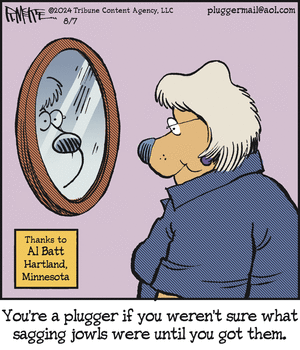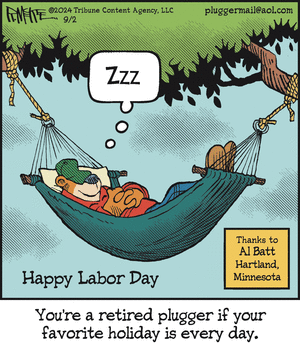Naturally
The dark was lifting. The curtain opened to a broad palette of birdsong and flowers. Jewelweeds (spotted touch-me-nots) bloom July through September. Moisture beads on its leaves and glistens like jewels in the sun. A favorite of hummingbirds, it has trumpet-shaped flowers and seed capsules that explode when touched. The watery sap of jewelweed is reputed to help soothe rashes from poison ivy and stinging nettle.
It’s a good day when I spot a crab spider on a wildflower. They are white or yellow with two pink or red slashes along the sides of the abdomen. They can change their color, a process that can take several days, and are easiest to find on pink flowers. Crab spiders get their name from their crablike appearance and their ability to walk sideways. They are passive hunters that wait motionless and feed on insects that come within their grasp. The male is tiny compared to the female. I’ve heard that to mate without being eaten, he must first tie up the female with silk. After mating, the female easily breaks the restraints. I’ve often read that the male covers the female loosely with strands of silk, which is considered a part of courtship referred to as a bridal veil. I’m guessing the latter is likely the actual story.
I enjoy the delicious fruit of the Juneberry, aka shadbush, serviceberry, shadblow and Saskatoon berry. Folklore suggests that serviceberries get their name from funeral services, because by the time the ground thaws enough for burials, serviceberry flowers are in bloom. That might be factual, but it has the ring of a myth.
I watched a thirteen-lined ground squirrel (striped gopher or squinny) scurry across the sizzling pavement. There was no lollygagging. The midday sun might have been giving the little animal a hot foot. Ground squirrels run with their tails straight out. Chipmunks run with their tails upright.
A friend is threatening to go all Carl Spackler on the raccoons that are putting a crimp in his bird feeding. Carl Spackler, a golf course groundskeeper played by Bill Murray in the movie, “Caddyshack,” said this while preparing to dynamite a gopher’s tunnel, “In the immortal words of Jean Paul Sartre, 'Au revoir, gopher.'”
Q&A
“Could bats be drinking from my hummingbird feeders at night?” No, there are no nectar-feeding bats in Minnesota. There aren’t even any Kool-Aid drinking bats in Minnesota. The seven native bat species in Minnesota are all insectivores.
“How many species of hummingbirds are there?” There are 368 hummingbird species according to BirdLife International. Hummingbirds are native to the Americas.
“Does Minnesota have the largest population of its state bird?” According to the National Loon Center, Minnesota has the largest population of common loons in the Lower 48, with 4650 breeding pairs, Wisconsin has 1250 pairs and Maine has 1700. Alaska has 4800 breeding pairs. Loons return to northern forested lakes and rivers in April or early May. The USGS says the common loon’s breeding range includes Alaska, much of Canada and portions of Washington, Idaho, Montana, North Dakota, Minnesota, Wisconsin, Michigan, New York, Vermont, New Hampshire and Maine. Manitoba has 11,000 breeding pairs, British Columbia 25,000, Quebec 50,000 and Ontario 97,000. Loons are excellent indicators of water quality as they require crystal-clear lakes (which makes it easier for them to see prey underwater) with abundant populations of small fish. They need lakes with enough surface area for their running takeoffs. All five species of loons breed in Alaska: red-throated, Arctic, Pacific, common and yellow-billed loons.
“Why are some eggs speckled?” Here are three plausible reasons. It might be in defense against brood parasitism by helping parents differentiate their eggs from those laid by an intruder. It could be for camouflage. Eggs not readily exposed to the view of predators tend to be pale and unmarked (not all), with no camouflage needed. Killdeer eggs, which are exposed on the gravel of a driveway and in urgent need of a disguise, are heavily marked, which serves as an effective camouflage. The dark pigment on the eggs could make them less resistant to breakage.
“What colors can birds see that we cannot?” Humans have only one nonspectral color—purple. Birds can see up to five: purple, ultraviolet+red, ultraviolet+green, ultraviolet+yellow and ultraviolet+purple. Technically, purple isn’t in the rainbow. It arises when our blue and red cones are stimulated, but not our green cones. Nonspectral colors are those not found in the visible spectrum of light.
“What do northern house wrens eat?” They feed on a wide variety of insects, including beetles, earwigs, true bugs, grasshoppers, daddy longlegs, crickets, caterpillars, leafhoppers, moths, flies, springtails and many others, plus spiders, millipedes and snails. The collective noun for wrens is a herd or a chime.
Thanks for stopping by
“Nature is not a place to visit. It is home.”—Gary Snyder.
“I hold one share in the corporate earth and am uneasy about the management.”—E. B. White.
Do good.
©️Al Batt 2025
Each day brings beauty in many forms. The ebony jewelwing, a magnificent damselfly with large black wings, is often seen in tree-shaded streamsides but can move far from water. It feeds on insects snatched from the air. Photo by Al Batt.



